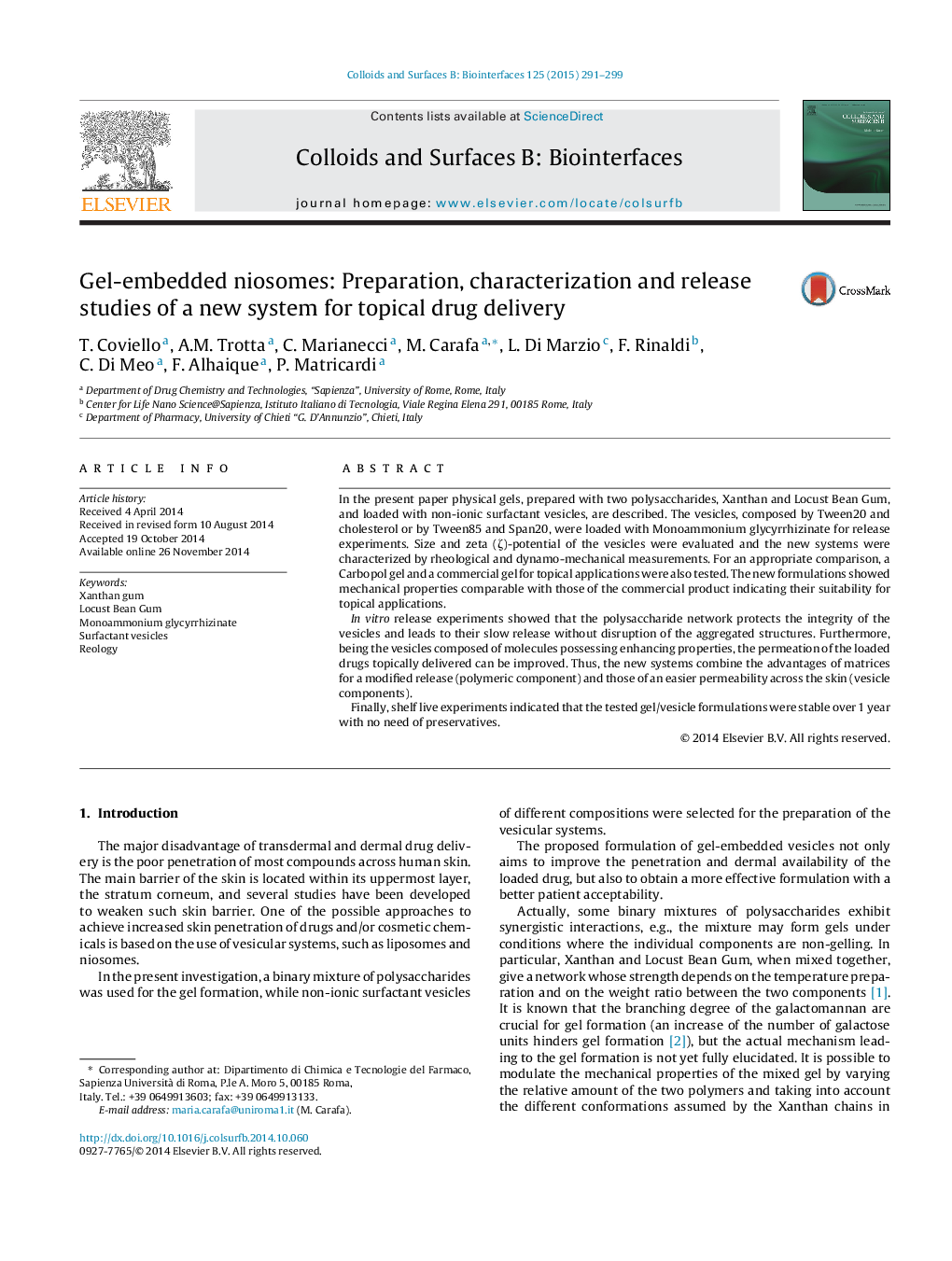| Article ID | Journal | Published Year | Pages | File Type |
|---|---|---|---|---|
| 599596 | Colloids and Surfaces B: Biointerfaces | 2015 | 9 Pages |
•Gels were prepared by Xanthan and Locust Bean Gum and loaded with niosomes.•Ammonium glycyrrhizinate (AG), a natural compound, was chosen as a model drug.•The niosome-embedded AG formulations modulate the diffusion of the drug.•The injectability tests showed that the formulations can be suitable for marketing.•The gels can be considered suitable for topical applications also after 1 year.
In the present paper physical gels, prepared with two polysaccharides, Xanthan and Locust Bean Gum, and loaded with non-ionic surfactant vesicles, are described. The vesicles, composed by Tween20 and cholesterol or by Tween85 and Span20, were loaded with Monoammonium glycyrrhizinate for release experiments. Size and zeta (ζ)-potential of the vesicles were evaluated and the new systems were characterized by rheological and dynamo-mechanical measurements. For an appropriate comparison, a Carbopol gel and a commercial gel for topical applications were also tested. The new formulations showed mechanical properties comparable with those of the commercial product indicating their suitability for topical applications.In vitro release experiments showed that the polysaccharide network protects the integrity of the vesicles and leads to their slow release without disruption of the aggregated structures. Furthermore, being the vesicles composed of molecules possessing enhancing properties, the permeation of the loaded drugs topically delivered can be improved. Thus, the new systems combine the advantages of matrices for a modified release (polymeric component) and those of an easier permeability across the skin (vesicle components).Finally, shelf live experiments indicated that the tested gel/vesicle formulations were stable over 1 year with no need of preservatives.
Graphical abstractFigure optionsDownload full-size imageDownload as PowerPoint slide
